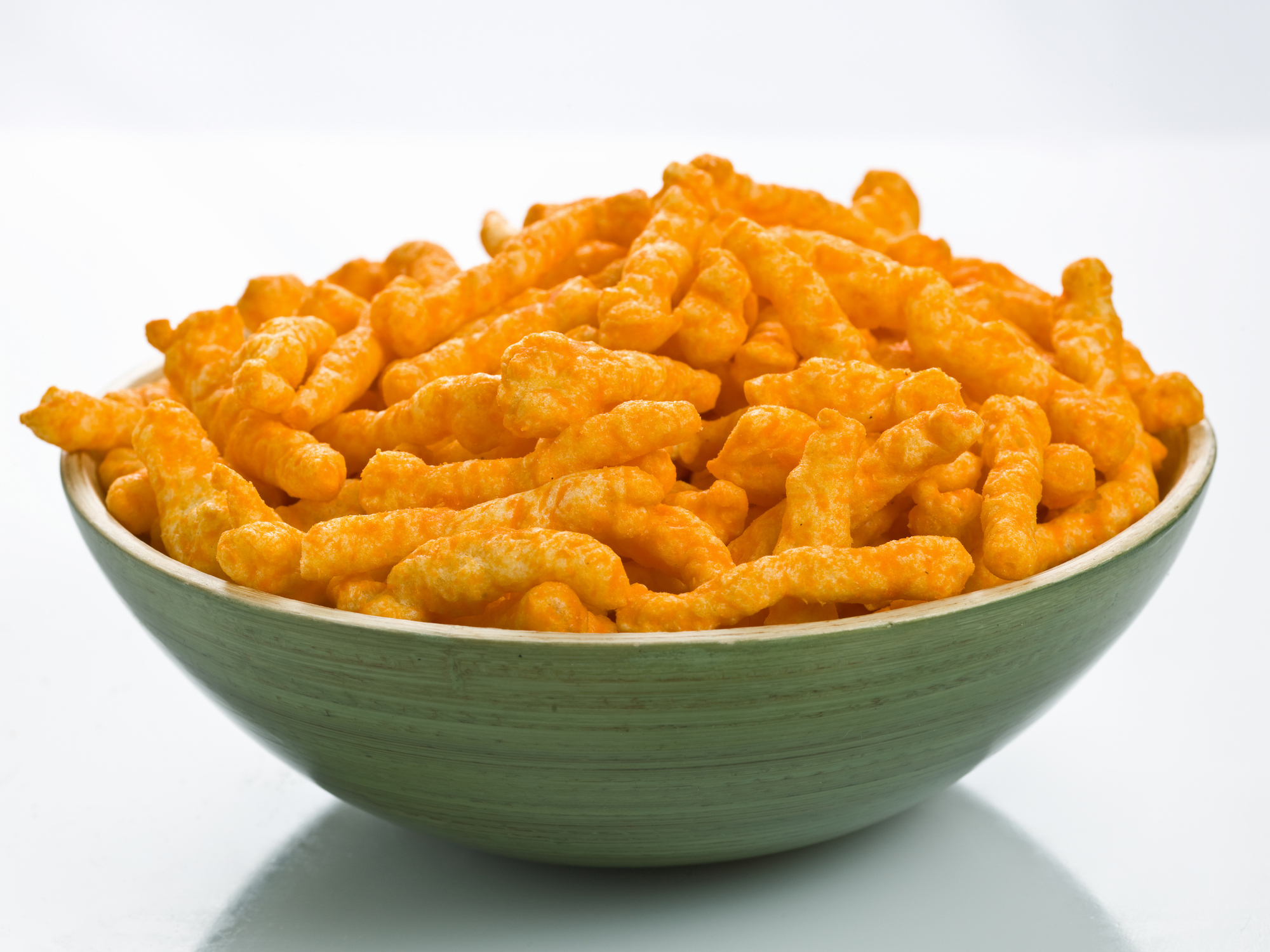Get Easy Health Digest™ in your inbox and don’t miss a thing when you subscribe today. Plus, get the free bonus report, Mother Nature’s Tips, Tricks and Remedies for Cholesterol, Blood Pressure & Blood Sugar as my way of saying welcome to the community!
Why Cheetos are the perfect ‘food’

By now you probably know that I’m a big fan of Michael Pollan and that I’ve adapted one of his books’ subtitles to repeatedly summarize what we should be eating (Eat REAL food. Not too much. Mostly plants).
The other day, I came across another of his quotes that I thought was equally astute:
“If you’re hungry, eat an apple. If you don’t want the apple, you’re not hungry.”
We eat for many reasons, only one of which is hunger. My patients tell me they also eat from boredom, as a pick-me-up, and in times of stress.
But many also note that there are certain foods they turn to preferentially, and these happen to be ones that are typically counterproductive to health. “I always have space for dessert.” “I crave Doritos.” “I can’t walk past that bowl of M&Ms at work without grabbing a handful.”
Turns out we can become addicted to certain foods. And here’s how…
Addiction: Not just for drugs
Pleasure is a sensation we experience when dopamine is released in the brain and couples with the dopamine receptors that reside there. And we all like the feeling of pleasure and seek it out preferentially. So, if junk food gets your dopamine firing, you’re going to look for opportunities to have that junk food again. Voila. The beginning of a junk food addiction.
With repeat exposure, those dopamine receptors get “down-regulated” — meaning you need more dopamine to get the same pleasure high. You’ll need to eat more junk food to get the same brain response. This is called tolerance. The other half of this is that with down-regulated dopamine receptors, you lose the dopamine effect faster, meaning you crash faster. That junk food high won’t last as long. This is called withdrawal.
Related: 6 steps to snap your junk food addiction
If this is all starting to sound a bit like drug addiction, that’s because it is. And here’s the scary part: food manufacturers know all about these brain pathways and exploit them.
Do you know what the perfect food is, from the vantage point of a food company? An egg? An apple? Nope. It’s Cheetos.
Fatal attraction and food
Think about Cheetos’ attraction… for starters:
- Cheetos are bright orange and we’re attracted to bright colors.
- It delivers the perfect combination of salt, sugar, and fat for maximum dopamine stimulation.
- The crunch… well, it’s JUST RIGHT — the result of feedback from multiple focus groups — leading to even more dopamine stimulation.
- And that airy quality where you bite it and it seems to disappear in your mouth? There’s an industry term for that: vanishing caloric density. It means your brain gets confused as to whether you actually ate something. For evolutionary reasons, the brain will default to “no, you didn’t eat anything, so keep munching.”
- And you know how you get that orange Cheetos powder on your fingers, so you lick them from time to time? This ensures that flavor intensity is always varying… so you never get bored.
We’re attracted to it. It fires off those dopamine receptors at maximum tilt setting us up for tolerance and withdrawal. We are fooled into thinking we’ve eaten less than we have. And we never get bored of it.
Yup. Cheetos are the perfect food if your goal is to addict a consumer.
This is the food environment we live in. And the more I’ve learned about what my patients were up against the more determined I became to offer them a better alternative in the form of Step One Foods.
But there are other reasons to have hope. A couple of weeks ago I wrote about how our taste for different foods can change. Turns out we have a lot of control over what we enjoy eating. And the best part about eating a variety of whole, real foods is that the pleasure doesn’t just come from a dopamine hit but rather from the extended feeling of satiety and lack of a crash.
So, if you’re hungry, eat an apple. If you don’t want the apple, consider what might be driving you to want to eat. It’s this reflection that can make you more aware of your food addictions or other counterproductive reasons you reach for unhealthy foods like Cheetos — and help you recognize the food products purposefully designed to mess with your willpower.
After all, awareness of habitual or addictive behavior is the first step to overcoming it.













